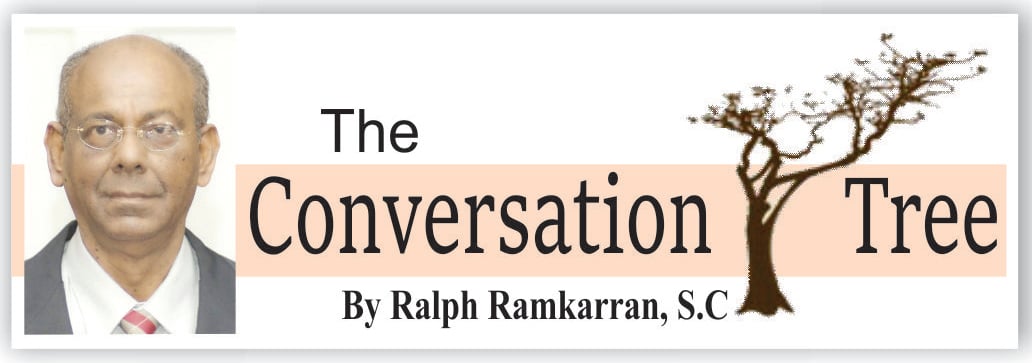When I first encountered the issue of rigging of elections in Guyana, I was a student activist. Along with a team, I investigated the electoral roll in the UK and found that it was totally and massively fabricated. I led a delegation to Sir John Carter, the Guyana High Commissioner to the UK, and protested the manufactured list and other emerging electoral misdeeds. I had an interview with the London Times newspaper, which wrote a long article on the planned rigging of the elections. I engaged with the Panorama television team providing information for the film “The Trail of the Vanishing Voter,” which exposed the depth of the fraudulent electoral list, showing horses in a field where voters were listed as living. Along with others, I lobbied the House of Commons to get a question asked. I engaged in demonstrations, protest actions and outreach activities. That was in 1968, 52 years ago, and I was a student in London. We’ve come full circle, experiencing déjà vu, witnessing the open and blatant rigging of elections all over again.
Overwhelmed by the 1968 and 1973 rigging, and other factors, Cheddi Jagan proposed a policy of a National Patriotic Front in 1978. After bitter opposition, it was finally accepted and announced. Shared governance remained the policy of the PPP and Cheddi Jagan regularly referred to it supportively. He developed an entire ideology around the issue as offering a comprehensive political solution to political instability in Guyana.
The triumphalism within the PPP after 1992, together with the overwhelming bitterness and hostility of Desmond Hoyte, Opposition Leader and Leader of the PNCR, made any effort at shared governance impossible. When Cheddi Jagan passed, shared governance passed with him, but the sentiment survived. The issue was formally raised from time to time, including by Dr. Roger Luncheon in wake of the 1997 elections violence. In this same period, I wrote a paper calling for a revival of discussion of the issue. It was partially circulated but was never discussed.
In 2002, Desmond Hoyte announced his support for shared governance following an open and spirited debate among some younger PNCR leaders. In 2003, then president Jagdeo informed the PPP that he was under increasing pressure from the international community to reach out to the PNCR and offer some prospect of shared governance. This gave rise to the PPP’s declaration in 2003 entitled “Building Trust and Confidence,” which promised inclusivity after building trust during the legislative process of reforming the constitution. Nothing happened. Even Jagdeo’s modest effort to engage with the PNCR while Robert Corbin was leader met with stiff resistance in the PPP and eventually failed.
The PNC had the opportunity up to 1991, before the PPP was elected to office, to agree to a form of shared governance as proposed by the PPP. It dropped the ball and spent 23 years in opposition. The PPP had the opportunity to solve Guyana’s ethno-political dilemma in 2011 by inviting the PNCR to join the government. A new dispensation would have emerged and Donald Ramotar would now have been in the final year of his two-term presidency. But by then the PPP had lost its strategic thinker, Cheddi Jagan, together with its raison d’etre and its self-appointed mission to unite the people of Guyana. Cheddi Jagan bequeathed these to his heirs, but they also dropped the ball. Cheddi Jagan was a human, prone to mistakes, like all of us, but on shared governance and winner take all, he was not wrong.
Advocates for shared governance must acknowledge that it is not supported among the broad electorate. Half of the electorate wants power to rule over the other half. Their leaders are swayed in their policy decisions by this sentiment, whether or not they accept the reasoning behind it. But they would not move too far ahead of their supporters unless they have no other choice and see no other way.
In 1978, when the PPP proposed a national patriotic front, it saw no way out of the Burnham dictatorship. In 1985, when the PNC sought talks with the PPP, it then saw no way out of the economic devastation that Guyana had experienced. In 2002 when Hoyte accepted shared governance, like the PPP in 1978, he saw no other way out of indefinite, exclusive, PPP rule. But the PPP was then riding high. In 2015, the APNU+AFC manifesto promised shared governance. They dropped the ball by reneging on their promise. Guyana should not have to wait for another 20 years before the PPP and APNU rediscover that they have no way out.
The shameful current rigging exercise will not now be accepted as a basis for shared governance by the PPP and its supporters. APNU’s leaders and supporters will resist it because they now feel empowered, having been out of power for 23-5 years. Recalling of visas and freezing of assets far down the road, and non-recognition of the Government, would be de minimis, mere taps on the wrist, and are worth suffering rather than to endure another 23-5 years in opposition. APNU knows that the freezing of oil funds would be a major step and has been taken only against countries like Venezuela and Iran.
This column is reproduced, with
permission from Ralph Ramkarran’s blog,





